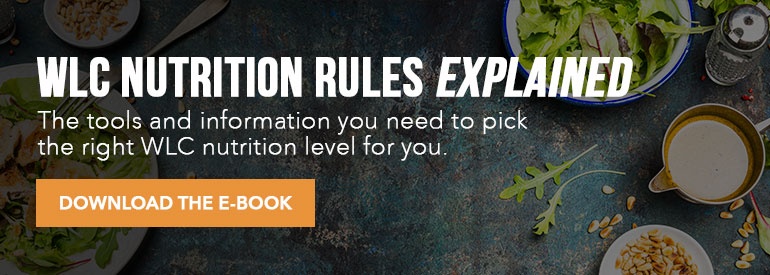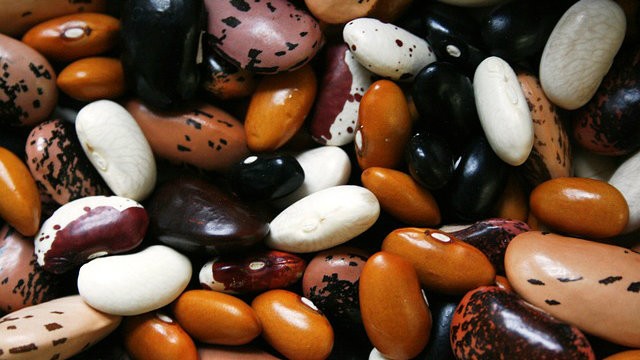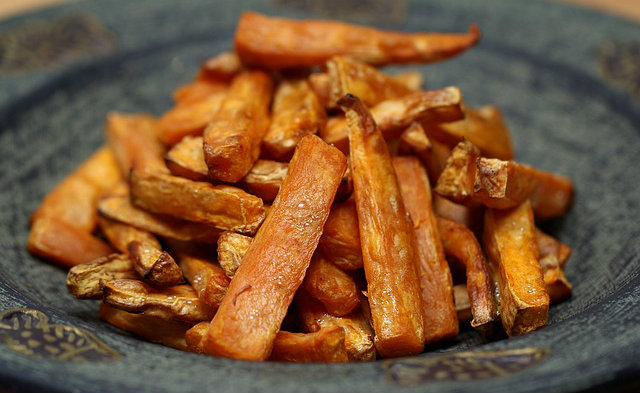As the Whole Life Challenge continues to grow, we strive to create and maintain a game that is as relevant as possible to you, with the most up-to-date nutrition information we have at our disposal. As a result, we’ve recently made some small changes, both to the philosophies of the levels as well as to what is compliant for each.
Let’s Start with the Goal of Each Level
It’s helpful not to think of one level being more “advanced” or difficult than another. Any significant change to your dietary routine will represent some level of difficulty. Someone may already be eating close to what we call Performance, so making that final push to clean things up isn’t nearly as challenging for him or her as it is for someone who has never attempted any significant dietary mindfulness to take on our Kickstart level. It’s not about being more hardcore — it’s about goals.
- The Performance Level: This level was created with two main goals in mind — physical performance and reducing inflammation. If you care significantly about your athletic performance, you have to care about inflammation. Any kind of chronic level of inflammation is going to hinder performance and recovery. If that sounds like you, this is your level. Even more importantly, if you are managing any kind of chronic illness or inflammatory condition, this level will remove most of the common agents of inflammation from your diet. There may be more that are specific to your condition, and you’ll want to be mindful of those as well.
- The Lifestyle Level: This is for people who have, or would like to develop, a long-term, sustainable commitment to healthy nutrition. It is built around fresh, whole foods, and also acknowledges that life is delicious. You won’t find cake and ice-cream in this level, but you will find a course of nutrition that allows you to enjoy the freshest seasonal foods, along with the occasional foray in some of the more indulgent things in life.
- The Kickstart Level: Some of you may be taking on any kind of dietary regimen for the first time. You don’t really know where to start and all of this talk about “paleo,” “low-carb,” or “keto” makes you cringe. You just want to cut out the worst offenders. This level is a great place for you to begin. You’ll be cutting back on bread, pasta, beer, cheese, fried things, and desserts, but for the most part, you won’t have any trouble making meals that are delicious and that you recognize.
A New Distinction on Our Lists
There are foods that are compliant in the Whole Life Challenge that still bear paying a little attention to so you don’t go overboard. You’ll find many things on our lists — like nuts, fruit, sweet potatoes, and rice — that are fine in moderation, but can add a significant number of calories and increase inflammation. Therefore, too much of these foods can stand in the way of feeling great and maintaining a healthy weight. There are no penalties for quantities, but if you see a food marked with an asterisk, know that it’s one we want you to try to limit.
Finally: The Changes!
Beans and Legumes
These are now non-compliant on the Performance Level for non-vegetarians. When we first started the Challenge we didn’t have levels, but we did have vegetarians. We made beans and legumes compliant as a protein source so our vegetarians wouldn’t starve to death. Now that we have a separate Vegetarian level, we decided it was time to remove these foods from the non-vegetarian lists.
Why? Because of inflammation. Beans and legumes (that also means peanuts) contain chemicals they use to defend themselves against being eaten. When you’re stuck in the ground and can’t run from predators, you have to come up with something. Although we’ve figured out ways to eat these foods anyway, those chemicals are still a bit toxic to us and can result not only in inflammation, but in binding up the nutrients we’ve taken in from other foods. We call these chemicals “anti-nutrients” and it’s a good idea to take in as little of them as possible.
Corn, Potatoes, and White Rice
These are now compliant (with caution) on the Lifestyle Level. We wanted to make our Lifestyle Level as inclusive as possible of foods we regard as whole and wholesome, in spite of the fact they may be calorically dense. And truthfully, Andy and I eat these foods in what we consider to be a healthy, whole food diet. Not all the time, but we don’t consider them “bad” in moderation.
While the skins of potatoes contain some toxins you might want to avoid, there is little evidence to suggest that potatoes are worse for you than sweet potatoes. In fact, they have a less profound impact on your blood sugar. We’ve also always allowed brown rice on this level, and white rice is just as safe — only perhaps a little easier to overeat, so be careful. Corn, as a starchy and sugary vegetable was outlawed from the Challenge some time ago, but we’ve decided it is time for a reprieve.
Sweet Potato Fries
This is probably the worst news of this update — sweet potato fries are now non-compliant on the Performance Level. Have mercy! This is simply an issue of food quality. We’re not talking about “organic vegetables versus conventionally raised vegetables” quality — we’re talking about junk food. Let’s be honest, every time you had a plate of sweet potato fries during the Challenge, you felt like you were getting away with something. You were.
The Challenge is as much about behavior as it is about specific food choices. And we decided the mindset of sweet potato fries just didn’t belong in the Performance Level. Our Performance Level is designed for people concerned with top-level output and managing health conditions. Sweet potato fries don’t jive. You can still bake sweet potatoes in little sticks and call them fries, you just can’t order them with every bun-less burger you get.
Industrial Seed Oils
What the heck is an industrial oil? Motor oil? If only. Industrial seed oils are oils that are produced from seeds — corn, cottonseed, canola, soy, sunflower — using extremely high heat and chemical processes. These are no longer compliant on the Performance Level and are compliant (with caution) on the Lifestyle Level.
Why? Once again, inflammation. Up until about 100 years ago, we typically only used these oils in fuels and solvents. It wasn’t until the 1960s, when the cholesterol inspired diet-heart hypothesis was born, that vegetable oils were recommended to reduce the amount of cholesterol and animal fat people ate. The problem? The processes that create vegetable oils also create carcinogens (cancer-causing bad guys). These oils are also extremely high in omega-6 fatty acids (the inflammatory kind). While we need some omega-6 fatty acids, the amount we get in a typical modern diet is in incredibly out of proportion to the amount of omega-3 fatty acids (the anti-inflammatory kind) we consume. As a result, industrial seed oils are linked to countless inflammatory conditions.
Many of these fats are also quickly oxidized due to the heat involved in their processing. Oxidized agents in your body wreak cellular havoc — which is why you may take antioxidants. Antioxidants are your mercenary army in your war against the oxidized bad guys. Taking in industrial seed oils like canola, soy, corn, sunflower, and cottonseed, is like sending weapons and money to the enemy. It’s just a bad idea.
That’s it, folks! All good news (except maybe those sweet potato fries). We recommend you download our newest Food Lists and Comparison Chart to keep all the details front and center. If you click that link, you’ll find a Level Comparison Chart with the changes highlighted. Enjoy the Challenge!










